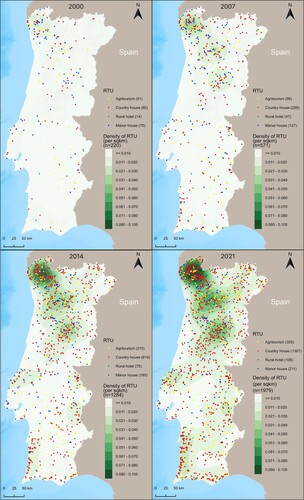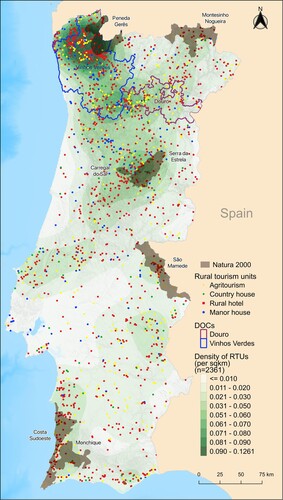Figures & data
Figure 1. Dissemination of rural accommodation (Kernel density estimated from the year of opening).

Table 1. Average DEGURBA according to typology and time of opening.
Figure 2. The wine regions and Natura 2000 areas most relevant to Kernel density of accommodation units.

Table 2. Average distance (m) from vineyards, according to the wine region and typology of establishment.
Table 3. Average distance (m) from NATURA 2000, according to the typology of establishment.
TJOM_A_2079430_Supplementary material_Map2
Download PDF (47.5 MB)TJOM_A_2079430_Supplementary material_Map1
Download PDF (47.1 MB)Data availability statement
The data sets that support the findings of this study are all publicly available and referenced and can be provided by the corresponding author, RB, upon reasonable request.
